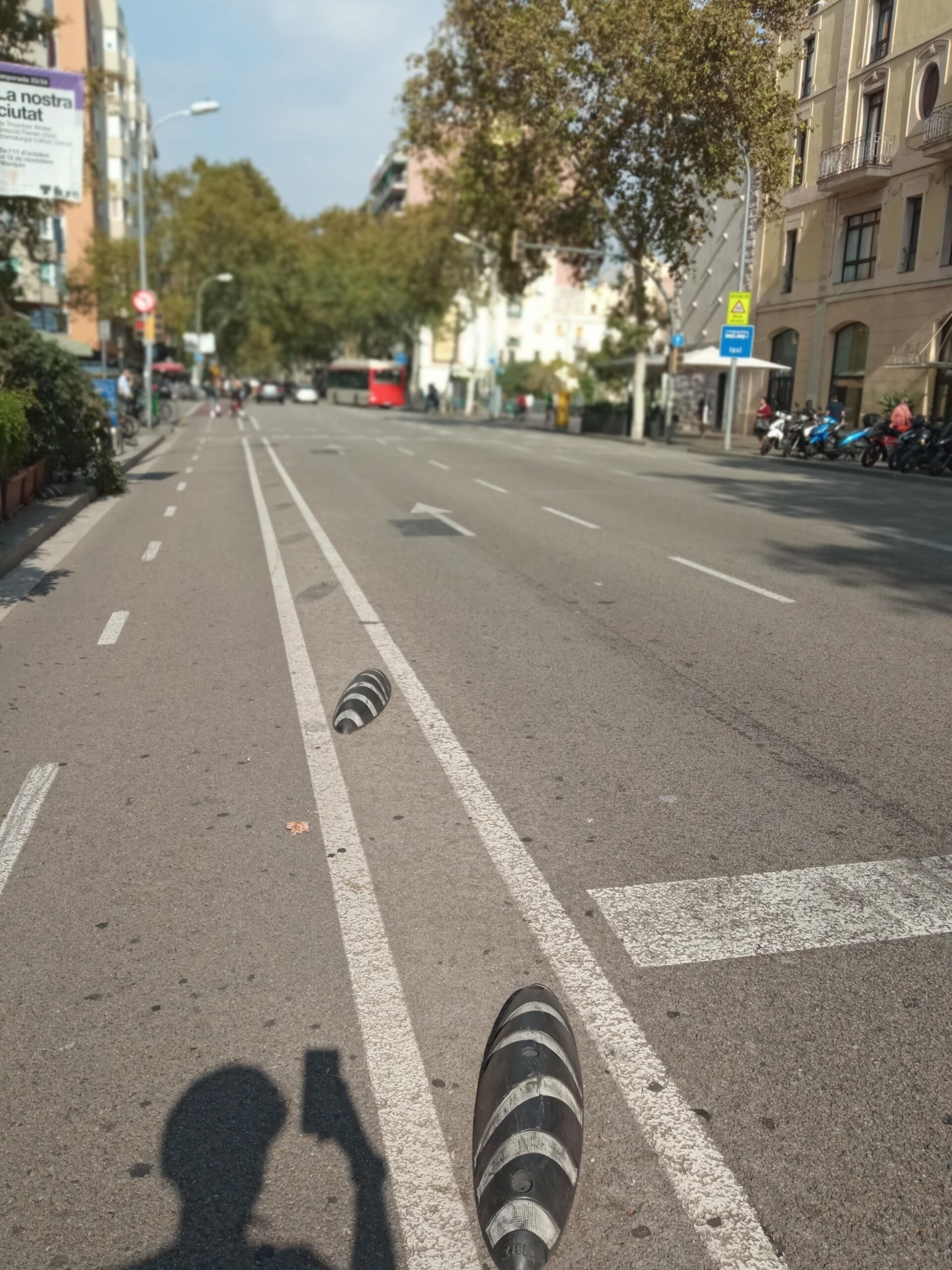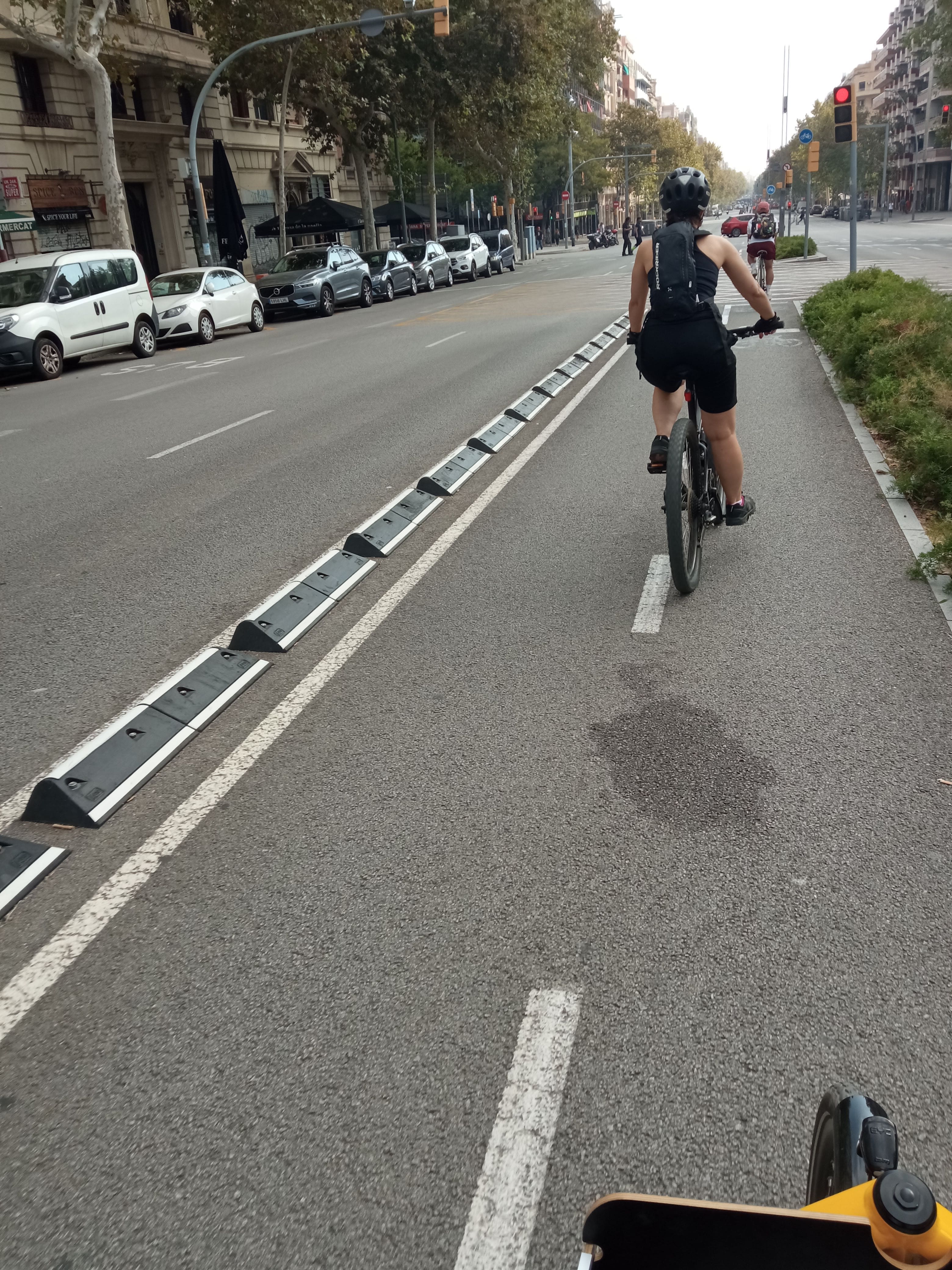The protective elements that separate cyclists from vehicle traffic is a major piece of cycling infrastructure. There are many designs including bollards, cement curbs, plastic protectors or beautiful planters with vegetation (Vancouver).
Barcelona’s separation strategy has relied on “armadillos” or zebra humps, made out of black recycled plastic, with fashionable white stripes. The “armadillos” are produced by Zicla, a Barcelona based company, which has sold its separation strategy to cities around the world. Visually speaking, I like them. They are visible, minimalist, effective and integrate well into the streetscape. But how long do they last? When the armadillos are placed into the wild, on the aggressive streets of Barcelona, how long does it take for one to be battered or pushed off its resting area? What is the life expectancy?
To help answer these questions, the team at City Lab Barcelona team is working with the Barcelona cycling organization, BACC, to document the maintenance of cycling infrastructure. This is the first time a civic organization approached us to use the BiciZen platform to help them answer a question one of their questions with a crowdsourcing approach. We were thrilled they saw the potential in using BiciZen to mobilize collective action.
BACC has developed a beautiful communication campaign around the theme “pedal and report”, encouraging cyclists to report maintenance problems in Barcelona’s cycling network: potholes, broken signals, erased paint, and other problems. For me, the most interesting question concerns ‘armadillo’ survival rates.
A group of us met on Saturday, 7 October 2023 to organize as part of BACC’s “pedal and report campaign”. Eduard Parrera and Adrià Arenas have spent a long time cycling in Barcelona and observing when and where ‘armadillos’ are knocked off their placement. Together, we developed a few hypotheses about what might be driving armadillo death, and based on that we also devised a sampling strategy for the Eixample District. Vehicles, especially large trucks, are probably the biggest predators of armadillos. The tires of moving vehicles certainly push many of them out of their position. But where does this happen and can we identify patterns? Can we expect higher ‘death rates’ (and therefore higher maintenance costs), in streets with higher volume traffic? Does the density of placement influence ‘survival rate’? What about the location on a corner, or near a garage entry? And what about traffic volumes? In the Eixample grid, there is more traffic on horizontal streets than on vertical streets. Does this difference in traffic translated into differences in armadillo survival rates?
After outlining these hypotheses, we set out to ride the streets and count exactly how many armadillos were removed in each street segment. In some segments, the ‘death rate’ reached 50%! For instance, on Ronda de Sant Pere between Parallel and c/Aldana 15 of the 30 armadillos had been pushed off their locations. A more average number was about 4 of 25, and in some sections, all were still there. In some places, some armadillos were new, so the city is already replacing old or damaged separators.
But other designs might be more resilient. For instance, the separation strategy on Parallel was highly resilient and it appears as if all the separators remained fixed. Here, the city did not use the regularaly spaced Zicla armadillos, instead a continuous row of separators (see images below). While they are not as visually attractive, it appears that their survival rate is higher, and therefore their maintenance cost is lower.
Adria and the BACC team will be writing up a report within the next few months that summarizes what we found. It seems like we might be able to make an interesting contribution on this question of maintenance. As cycling infrastructure ages, it is time for the issue of maintenance and maintenance costs to be understood more precisely.
A special thanks to Adrià Arenas, Eduard Parrera, Lola Chavez, Juan Granero Bellever, Luca Liebscht and many others who are contributing to this crowdsourcing campaign.





